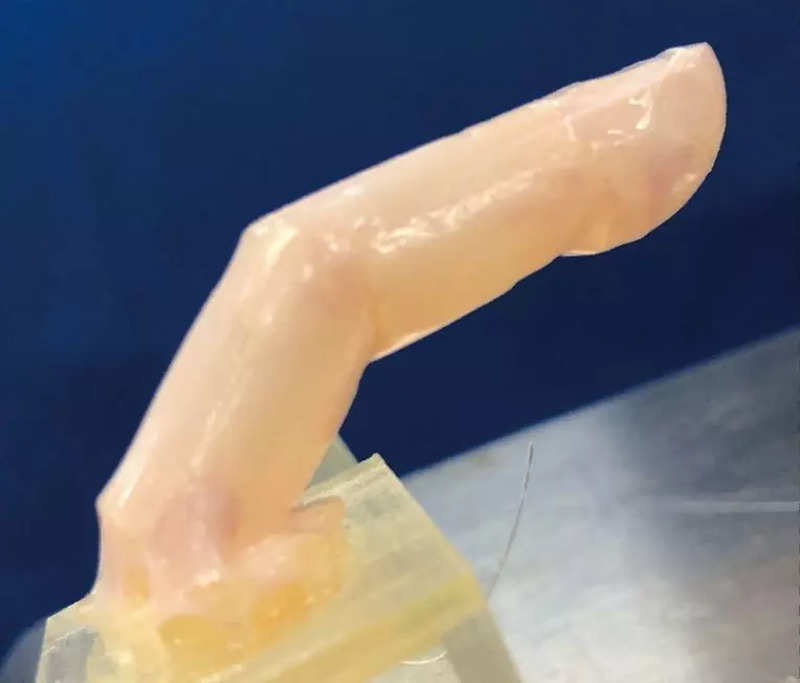

Scientists from Japan have introduced us one step nearer to human-like robots by crafting residing human pores and skin on robots which gave their fingers skin-like texture, in addition to water-repellent and self-healing capabilities.
Whereas present silicone pores and skin made for robots can mimic human look, it falls brief in the case of delicate textures like wrinkles and lacks skin-specific capabilities.
“The (new) finger seems barely ‘sweaty’ straight out of the tradition medium,” stated first writer Shoji Takeuchi, Professor on the University of Tokyo, Japan.
“Because the finger is pushed by an electrical motor, it’s also attention-grabbing to listen to the press sounds of the motor in concord with a finger that appears identical to an actual one,” he added.
Within the paper, introduced within the journal Matter, Takeuchi famous that to effectively cowl surfaces with pores and skin cells, they established a tissue moulding methodology to straight mould pores and skin tissue across the robotic, which resulted in a seamless pores and skin protection on a robotic finger.
To craft the pores and skin, the staff first submerged the robotic finger in a cylinder stuffed with an answer of collagen and human dermal fibroblasts, the 2 most important elements that make up the pores and skin’s connective tissues.
Takeuchi stated the research’s success lies throughout the pure shrinking tendency of this collagen and fibroblast combination, which shrank and tightly conformed to the finger.
Like paint primers, this layer offered a uniform basis for the following coat of cells — human epidermal keratinocytes — to stay to. These cells make up 90 per cent of the outermost layer of pores and skin, giving the robotic a skin-like texture and moisture-retaining barrier properties.
The crafted pores and skin had sufficient energy and elasticity to bear the dynamic actions because the robotic finger curled and stretched.
When wounded, the crafted pores and skin might even self-heal like people’ with the assistance of a collagen bandage, which regularly morphed into the pores and skin and withstood repeated joint actions.
“We’re shocked by how effectively the pores and skin tissue conforms to the robotic’s floor,” stated Takeuchi. “However this work is simply step one towards creating robots coated with residing pores and skin.”
Nevertheless, the developed pores and skin is way weaker than pure pores and skin and may’t survive lengthy with out fixed nutrient provide and waste elimination.
Subsequent, Takeuchi and his staff plan to handle these points and incorporate extra subtle practical buildings throughout the pores and skin, corresponding to sensory neurons, hair follicles, nails, and sweat glands.
“I feel residing pores and skin is the last word answer to present robots the look and contact of residing creatures since it’s precisely the identical materials that covers animal our bodies,” stated Takeuchi.
FbTwitterLinkedin






